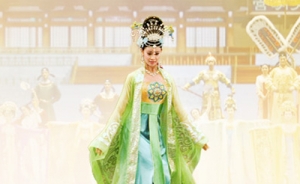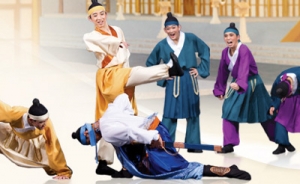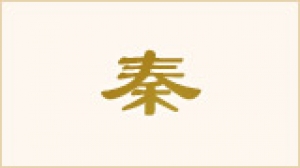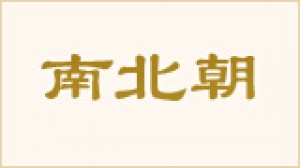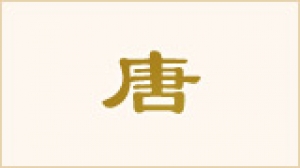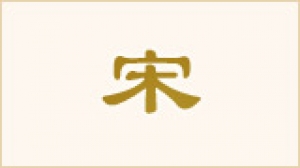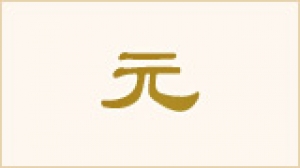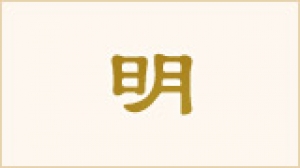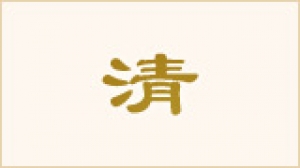Dinasti Han
Dinasti Han (206 S.M.–220 M.) sering dianggap sebagai zaman keemasan pertama China. Tempoh ini memupuk perkembangan falsafah Konfusianisme, serta amalan spiritual Buddha dan Tao. Ramai maharaja Han memerintah dengan mengikuti ideal spiritual purba Maharaja Kuning dan Lao-Tzu (Laozi) untuk mengekalkan keamanan dan kemakmuran. Cendekiawan dan jeneral yang berkebolehan di istana imperial telah menyegarkan empayar dengan idea baharu, peluang untuk pendidikan, dan perluasan wilayah.
Legasi Han
Dinasti Han bermula pada 206 S.M. apabila seorang pemimpin tentera kelahiran petani bernama Liu Bang dan jeneral-jeneralnya menggulingkan Dinasti Qin yang berkuasa. Liu Bang menubuhkan ibu kota baharunya di Chang’an, yang menjadi salah satu bandar terbesar di dunia dan berfungsi sebagai ibu kota China untuk beberapa dinasti yang akan datang.
Istana diraja mempromosikan Konfusianisme—dan idealnya iaitu penghormatan, ketaatan kepada ibu bapa (filial piety), kemanusiaan, dan keadilan—sebagai asas untuk menilai kelakuan yang betul. Cendekiawan Konfusian menubuhkan Universiti Imperial, sebuah institusi yang didedikasikan untuk menghimpunkan minda paling cerdas China dan melatih generasi baharu pegawai yang berilmu dan berbudi pekerti.
Dalam tempoh ini, wilayah China hampir berganda. Dinasti Han mengalahkan suku kaum yang bermusuhan di utara dan menandatangani perjanjian dengan klan di barat. Ini menjadikan perjalanan lebih selamat, yang mendorong kemunculan Laluan Sutera pada masa hadapan yang menghubungkan China dengan Empayar Rom yang jauh, memupuk pertukaran ekonomi dan budaya.
Legasi Dinasti Han terus dirasai hari ini. Kumpulan etnik majoriti di China dipanggil “Cina Han.” Pakaian tradisional dipanggil “pakaian Han.” Sistem penulisan dipanggil “aksara Han.” Dan bahasa Cina memanggil dirinya “bahasa Han” (漢語 atau hàn yǔ). Malah seorang wira dipanggil hǎo hàn (好漢), yang bermaksud “seorang Han yang baik.”
Tokoh Han Yang Cemerlang
Dinasti Han melahirkan beberapa jeneral paling legenda China. Antaranya ialah Han Xin yang cemerlang dan bertoleransi (aksara Cina untuk “Han” dalam namanya berbeza daripada “Han” Dinasti Han, tetapi merupakan cara yang baik untuk mengingati dari dinasti mana beliau berasal), serta “Jeneral Terbang” Li Guang yang boleh menembak anak panah jauh ke dalam batu.
Tokoh-tokoh terkemuka lain dari era ini termasuk ahli sejarah China yang paling terkenal dan pengarang Records of the Grand Historian, Sima Qian, penulis esei dan penyair Sima Xiangru, diplomat Zhang Qian dan Su Wu, ahli ekonomi Sang Hongyang, dan, tidak dilupakan, pelawak istana yang luar biasa Dongfang Shuo.
Era Han Kemudian
Pada tahun 9 Masihi, Dinasti Han tiba-tiba terganggu apabila anak saudara maharaja (Wang Mang) merampas takhta. Pemerintahannya berlangsung selama 14 tahun sehingga salah seorang keturunan maharaja pengasas (Liu Xiu) menyingkirkannya daripada kuasa dan memulihkan dinasti. Empayar yang dihidupkan semula itu dikenali sebagai Han Timur (25–220 M.) untuk membezakannya daripada Han Barat yang sebelumnya.
Seperti semua dinasti, Han mempunyai kebangkitan, kemuncak, dan kejatuhannya. Akhirnya, komplot istana dan pemberontakan besar menyebabkan kejatuhannya. Pada tahun 189 Masihi, panglima perang Dong Zhuo mengetuai tentera ke ibu kota dan mencetuskan tempoh pertempuran. Kemudian, Cao Cao menyatukan wilayah di utara Sungai Yangtze, Sun Quan menubuhkan rejimnya sendiri di selatan, dan Liu Bei menduduki wilayah di barat. China dengan itu memasuki tempoh baharu—keseimbangan tiga pihak yang didokumenkan dengan baik dalam epik Hikayat Tiga Kerajaan.
July 15, 2011


